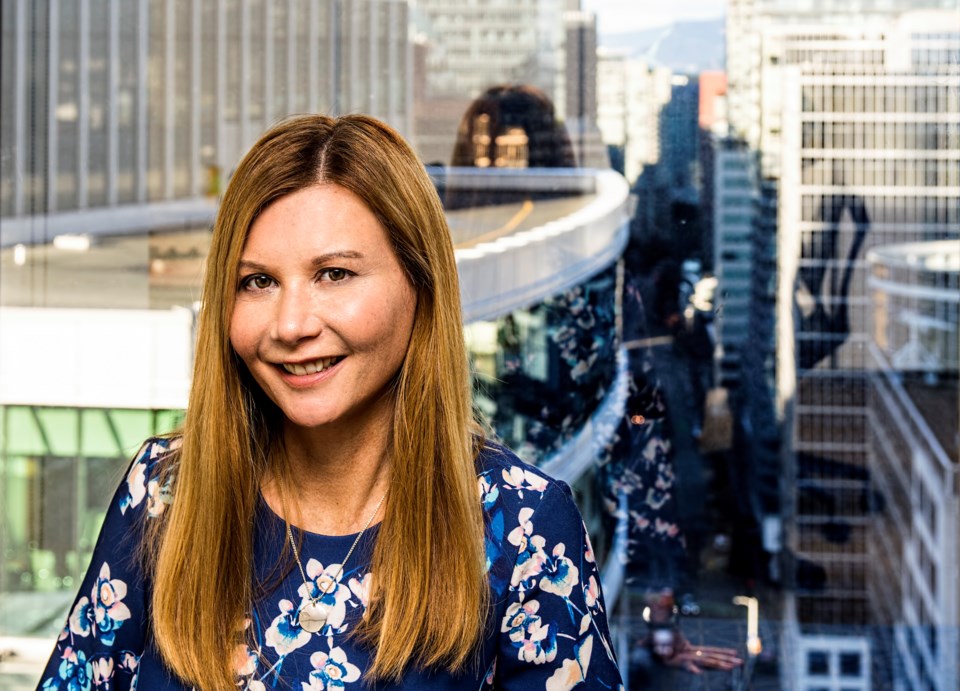Plexiglas shields are coming down and retail has taken off in Vancouver this spring, with a new report from Colliers International pegging current downtown vacancies at 2.5 per cent.
While vacancies are approaching 5 per cent in high-profile submarkets like Gastown, Kitsilano and South Granville may paint a picture of ill-health, the majority of Vancouver neighbourhoods are experiencing strong increases in rents thanks to a constrained supply of space.
The upscale Alberni and Kerrisdale precincts have zero vacancies, while the West End, Davie Street, Yaletown and Cambie Village report no more than a couple of vacancies each.
“Retail is roaring back,” says the report’s headline, and Colliers senior managing director Madeleine Nicholls says it’s true.
“Canadian retail sales overall are very strong, stronger than they’ve ever been,” she said, noting that retail sales in Canada are on track to top $700 billion this year.
Within B.C. and the Vancouver market in particular, strong in-migration has laid a solid foundation for strong growth in organic demand that has benefitted local retailers.
According to Statistics Canada, seasonally adjusted retail sales for B.C. in 2021 were up 13 per cent over 2020 at $98.6 billion. During the latest 12 months ended in April, sales were up 6 per cent versus the previous year, a more modest pace that reflected the reopening in spring 2021 as vaccines rolled out.
With the economy continuing to reopen in 2022, Nicholls sees bright prospects ahead.
“What’s really opening is the opportunity for a new wave of retail to come in,” she said. “Storefronts that may have gone vacant in the last couple of years, the prognosis is very good that they will be filled. And the reason for that is because there’s still a lot of demand for retail.”
The robust performance of specific neighbourhoods partly reflects the bifurcated nature of the recovery. Key neighbourhoods outside downtown have been the most resilient and have even seen improved performance thanks to people working from home.
But the persistence of hybrid work arrangements mean downtown retail will take longer to recover.
Daily foot traffic in downtown Vancouver remains half of what it was prior to the pandemic, and the slow lifting of international travel restrictions was a damper on leisure travel during the first half of 2022.
“I don’t think we’re anything close to what the tourism used to be, but nevertheless there still is some, and the people who are fortunate to travel, they’ve got money to burn and they want to spend it,” Nicholls said.
The willingness to spend is also seen in upscale shopping areas such as the 1000-blocks of Alberni and Robson in downtown, as well as neighbourhood retail in Kerrisdale. A more affluent shopper base combined with downtown residents has helped them both to be resilient.
“Luxury never really dipped at all through all of this,” Nicholls said.
Any available space is being taken up, as Cartier’s expansion to a new, larger store in the Alberni area underscores. Tudor and Chopard also recently opened shops west of Thurlow given the lack of vacancies closer to Burrard, representing the strength of demand despite high vacancies in certain pockets.
Rising construction costs are a headwind that could slow down new development, increasing pressure on the remaining stock. While inflation could dampen tourist arrivals into 2025 and spending by segments of the population more exposed to the effects of inflation, the strong position of suburban retail, where vacancies average 2.3 per cent, points to the strength of consumer demand.
“Continued population growth adds to already high demand for everyday retail requirements, particularly in grocery-anchored shopping centres,” Colliers reported.
Most new retail development in the region is taking place in mixed-use projects in suburban locations. Shape Properties redevelopment of Brentwood is set to complete this year, delivering 1.1 million square feet of retail, while Lougheed will following next year with a further 988,000 square feet.
Quadreal will complete its expansion of Willowbrook Centre in Langley next year, a 612,000-square-foot shopping mall, while PCI will complete its 437,000-square-foot Cottonwood Centre project this year.
Higher construction costs and rising interest rates are beginning to see several developers shelve plans for new retail space.
“If these projects remain on hold, we anticipate further pressure on net rents and a further reduction in the vacancy rate,” Colliers reported.
Nicholls is optimistic, however. She notes that restaurant operators both downtown and in the suburbs are hedging against higher construction cost by seeking out former restaurant premises, effectively making them more valuable spaces in the local market.
“We’ve got some exciting retail that is coming because the doors are open and the opportunity is there for them now,” she said. “There’s resiliency, there’s growth and there’s opportunity.”



